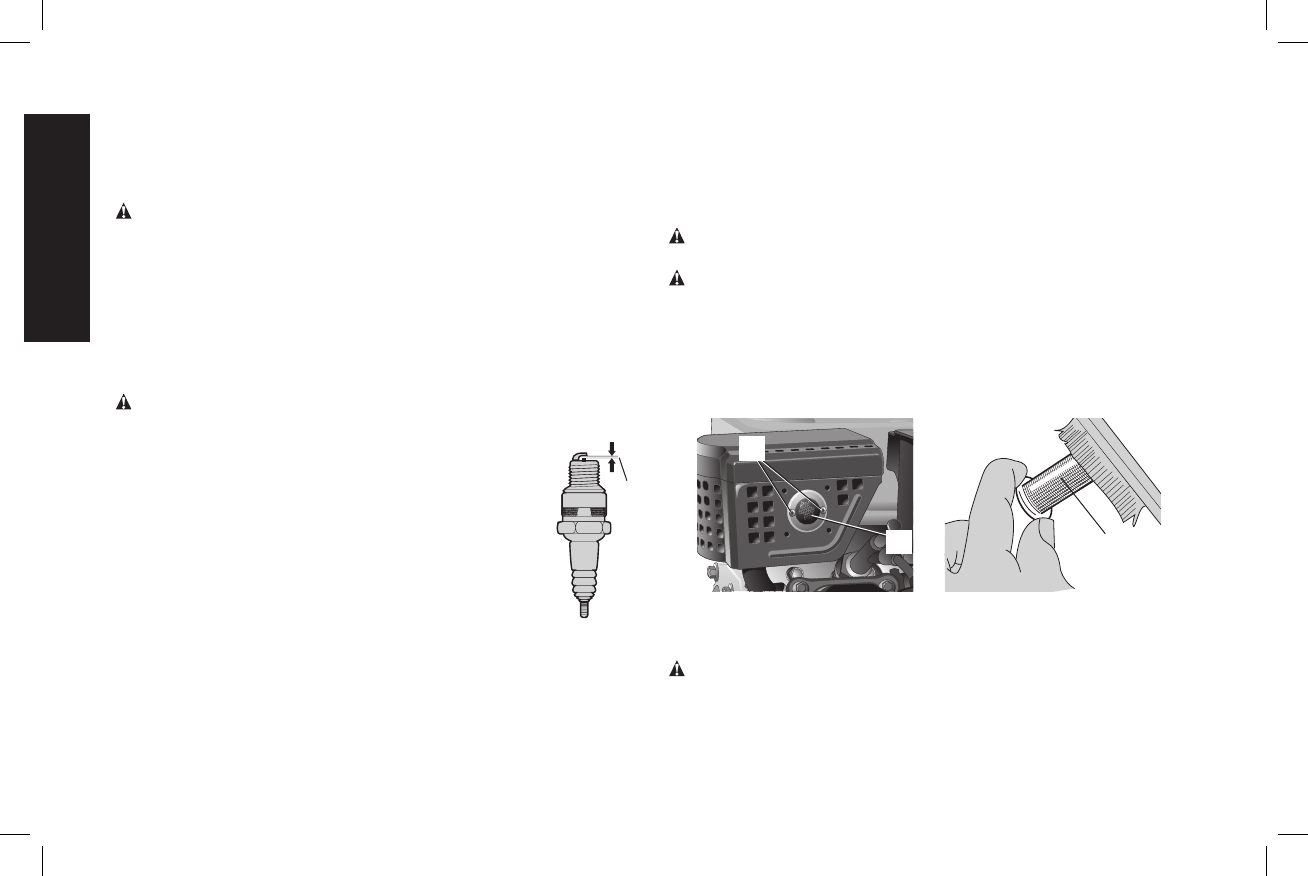
12
Use recommended spark plugs, see specifications for correct spark
plug. To ensure proper engine operation, the spark plug must be
properly gapped and free of deposits.
WARNING: If the engine has been running, the muffler will be very
hot. To reduce the risk of injury, allow cooling before proceeding.
1. Remove the spark plug cap.
2. Clean any dirt from around the spark plug base.
3. Use a spark plug wrench (not supplied) to remove the spark
plug.
4. Visually inspect the spark plug. Replace it if the insulator is
cracked or chipped. Clean the spark plug with a wire brush if it is
going to be reused.
WARNING:
Always wear certified safety equipment: ANSI Z87.1 eye
protection (CAN/CSA Z94.3) with side shields.
5. Measure the plug gap with a feeler gauge (DD).
DD
Correct as necessary by carefully bending the side
electrode. The gap should be: 0.70 –0.80 mm
(0.028 – 0.031 in).
6. Make sure the spark plug washer is in good
condition. Thread the spark plug in by hand to
prevent cross threading.
7. After the spark plug is seated, tighten with a spark
plug wrench to compress the washer. If installing a
new spark plug, tighten the spark plug 1/2 turn after
it seats to compress the washer. If reinstalling a used spark plug,
tighten 1/8–1/4 turn after the spark plug seats to compress the
washer. Do not overtighten.
8. Securely replace spark plug cap.
NOTE: The spark plug must be securely tightened. An improperly
tightened spark plug can become very hot and could damage the
engine. Never use spark plugs which have an improper heat range.
Use only the recommended spark plugs or equivalent.
WARNING: Risk of explosion or fire. DO NOT operate engine
without spark arrestor (S).
WARNING: If the engine has been running, the muffler will be
very hot. To reduce the risk of injury, allow engine to cool before
proceeding.
NOTE: The spark arrester must be serviced every 100 hours to
maintain its efficiency.
1. Remove the spark arrestor screws (EE) and remove the spark
arrestor (S).
S
S
EE
2. Use brush to remove carbon deposits from the spark arrester
screen. Inspect the spark arrester screen for holes or tears.
Replace the spark arrester if necessary.
WARNING:
Always wear certified safety equipment: ANSI Z87.1 eye
protection (CAN/CSA Z94.3) with side shields when removing carbon
deposits.


















